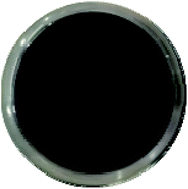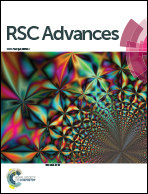Synthesis and characterization of black pigments based on calcium manganese oxides for high near-infrared (NIR) reflectance
Abstract
Calcium manganese oxide pigments (CaMnO3, Ca2MnO4, Ca3Mn2O7 and Ca4Mn3O10) were synthesized by applying a conventional solid-state reaction technique. The powders obtained were characterized by acquiring XRD, UV-Vis and NIR diffuse reflectance spectra and taking CIE L*a*b* chromatic coordinate measurements. Comparison of the UV-Vis and NIR spectra for the four samples indicated Ca2MnO4 to be the best near-infrared reflective black pigment. To optimize the color and thermal barrier properties of Ca2MnO4, Ti4+ was doped into the Mn4+ sites and Ca2Mn1−xTixO4 (0 < x ≤ 0.40) samples were synthesized. The lattice volume increased as the Ti4+ concentration was increased. When the number of the Ti4+ ions (x) in the chemical formula surpassed 0.30, however, the color changed from black to dark brown, and an unknown phase was observed in the XRD patterns. The NIR solar reflectance of the Ca2Mn1−xTixO4 pigments increased as the amount of Ti4+ was increased for the samples in the range 0 ≤ x ≤ 0.35, but plateaued for x > 0.35. These results indicated the Ca2Mn0.85Ti0.15O4 composition to be optimum for providing both an appropriate black color and NIR reflecting characteristics. This black pigment displayed sufficient NIR solar reflectance (R = 66.2%), a value higher than those of the commercially available pigments (R < 50%).


 Please wait while we load your content...
Please wait while we load your content...